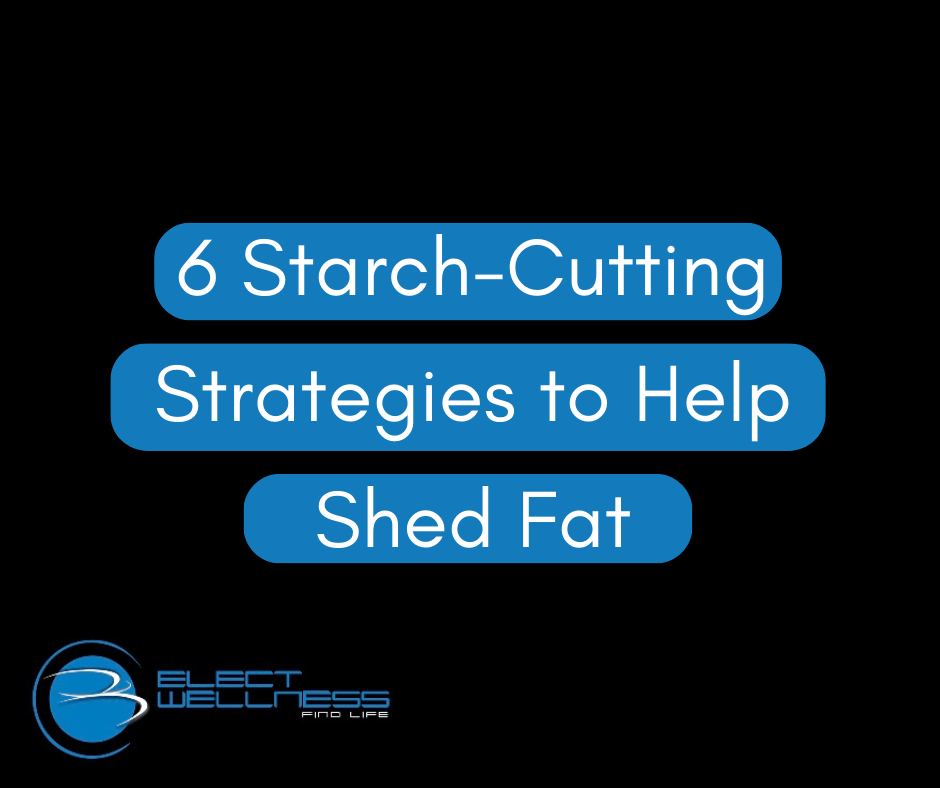Reducing one’s intake of worthless starches can be extremely difficult. The effects of these addictive carbohydrates go beyond our blood sugar, and can even impact our brain chemistry. It’s indeed a tough task to moderate this food category, but definitely doable. Here are 6 practical starch-cutting strategies I hope you find helpful on your quest for a better diet, a better body, and a better life.

1) Change the order of your meal. Most people start with starches when they sit down for a meal. Ever wonder why restaurants bring you things like rolls, chips, or pita the moment you find a table? It’s never fruits, veggies, or steak bites. That’s because they know you can consume a large quantity of starches and still be hungry enough for the main meal. In fact, the blood sugar roller coaster and food-party mentality they’ve just created may have you ordering dessert to boot! More consumption = more profit for the restaurant. Unfortunately, it also means a larger waistline and lower quality of life for you. Try this next time. Eat your fruits and veggies first, then your protein and fats. Save the starches for last. You’ll be amazed how much less you eat.
2) Consume more potassium. This is not well known, but potassium acts like a sort of “glue” that holds your stored carbohydrate, glycogen, together in your liver and muscles. It’s the major mineral inside your cells and aids in hydrating your tissues. A lack of potassium can trigger starch and sugar cravings. So be sure to eat plenty of potassium-rich foods – which are often natural carbohydrate sources like beat greens, yams, garden cress, lima beans, spinach, swiss chard, bamboo shoots, kale, brown mushrooms, jerusalem artichokes, white beans, bananas, and baked potatoes. Don’t try to cheat the game with massive amounts of potassium from supplements, as too much isolated potassium can throw off your body’s balancing act with sodium. Lots of potassium-rich natural foods are perfectly safe though.
3) Eat more fat. This may sound strange to anyone trying to reduce body fat, but the science is solid. Not only is fat the most filling of the macronutrients, it can help dilute your blood sugar, controlling insulin and preventing glucose swings that can result in sweet cravings. Of course, it’s the good fats that have a myriad of additional benefits, without the typical downside of saturated or trans fats. Eat more fish like salmon, tuna, halibut, snapper, grouper, and cod. Snack on nuts like almonds, walnuts, and Brazil nuts. Consume more seeds like pumpkin, sunflower, and flax. Use oils like extra-virgin olive oil. Last but certainly not least, make avocados part of your regular diet, which also happen to be a good source of potassium.
4) Drink more water. Science has shown that our brain often misinterprets thirst for hunger. Furthermore, carbohydrates help pull water into muscle cells. Combine these 2 facts, and it’s easy to see why we can find ourselves reaching for sugar and starches when our bodies actually want water. Stay well hydrated from sun-up to sun-down to help you cut out excess carbs.
5) Increase fiber intake. Fiber will help you reduce starch consumption for a couple different reasons. First, that additional water that you are now drinking will combine with the additional fiber in your diet to form a gel-like solution on your stomach that acts like a filter to slow the absorption of sugar into your blood. That means more stable blood glucose and fewer sweet cravings. Secondly, fiber will keep your digestive system clean and efficient, allowing you to properly absorb the nutrients in the foods you eat. If your body can’t absorb the nutrients, your brain will say “try again” and keep the cravings turned on.
6) Substitute common starches with smarter choices. Try spirulized zucchini or spaghetti squash instead of pasta. Try cooked cauliflower instead of mashed potatoes. Try wrapping your meat and veggies in lettuce instead of creating a sandwich with bread. Try dipping veggies in your hummus instead of dipping chips or crackers. And try carbonated water (even naturally flavored if necessary) in place of sugary sodas. You can get creative with things like olive oil, garlic, sea salt, lemon juice, and parmesan to bake tasty green bean fries as a healthy alternative to typical starch-laden french fries! Where there’s a will, there’s a way. Hopefully, these strategies and ideas will help. Keep fighting the good fight! It’s worth it.

Thomas C. Jensen is an exercise physiologist, nutritionist, and a nationally certified personal trainer through both the National Strength and Conditioning Association and the National Academy of Sports Medicine. He is a summa cum laude graduate of Harding University and a member of the Alpha Chi National Honor Society. As a wellness speaker and franchisor, he has shared his expertise in health and fitness with diverse audiences. He has been professionally training and consulting clients of all ages and backgrounds, for both health and human performance, for over 20 years. In March of 2004, he launched Elect Wellness, a thriving home-delivered personal training and nutrition coaching company, which has since expanded into an effective franchise system.



























